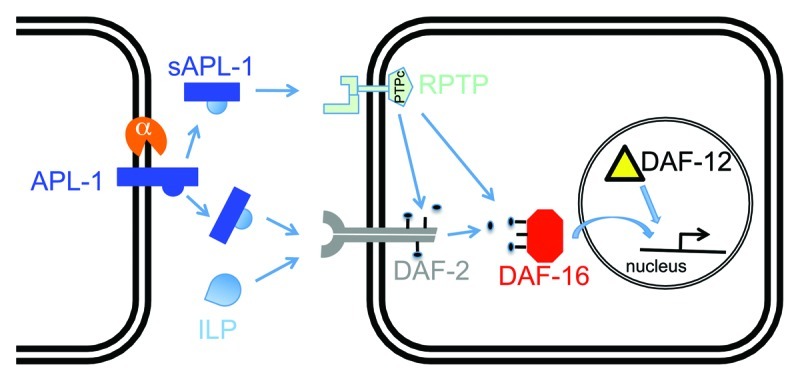
Figure 1. One model for how secreted APL-1 affects insulin/IGF-1 signaling. In C. elegans, APL-1 is cleaved by an α-secretase to presumably release an extracellular fragment sAPL-1 into the extracellular space. sAPL-1 could act on a distant cell either by competing with insulin-like peptides (ILP) for binding to the insulin/IGF-1 receptor (DAF-2) or by binding to a receptor protein tyrosine phosphatase (RPTP), whose activity influences downstream signaling of the DAF-2 insulin/IGF-1 receptor. Hence, sAPL-1 signaling modulates the insulin pathway to increase the activity of the FOXO transcription factor DAF-16 together with nuclear hormone receptor DAF-12 to modulate expression of metabolic genes. Direct evidence, such as physical binding of sAPL-1 to DAF-2 or RPTP, remains to be shown.
